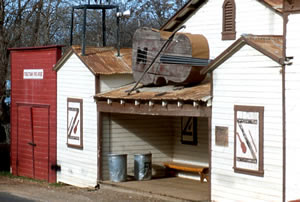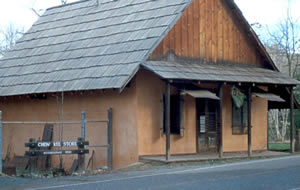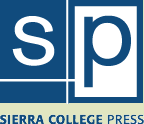Dr. Yee Fung Cheung
Early Chinese settlers conveyed many cultural accomplishments and attributes in their travels and helped transform the Sierra Nevada. Chinese immigrants built many roads, flumes and other infrastructure, including the Big Gap Flume in Mariposa County in the 1850s. By 1852, the Chinese were leaders in land improvement projects, and were even endorsed by California Governor John McDougal for swamp and flooded lands reclamation. Chinese immigrants were pioneer workers in the wine industry and Chinese farmers were the only ones who could successfully grow celery. Much of the citrus industry depended upon Chinese labor.
Chinese Medicine Was More Sophisticated
The Chinese were also leaders in medicine. In the 19th century, Western/European medical treatment was primitive by our standards. Western medicine had yet to develop any safe drugs, anesthetics, or surgical techniques, and unregulated, patent medicines were the norm. Barbers often doubled as surgeons and a common remedy for many ailments was to bleed the patient with leeches.  Age-old Chinese herbal medicine was remarkably sophisticated by comparison. Many of today’s "wonder drugs" are scientifically synthesized versions of Chinese herbal remedies. In the Sierra Nevada, there is a remarkable remnant of this Chinese medical legacy in the Amador County village of Fiddletown. It is the Chew Kee Herbal Medicine Store.
Age-old Chinese herbal medicine was remarkably sophisticated by comparison. Many of today’s "wonder drugs" are scientifically synthesized versions of Chinese herbal remedies. In the Sierra Nevada, there is a remarkable remnant of this Chinese medical legacy in the Amador County village of Fiddletown. It is the Chew Kee Herbal Medicine Store.
The store was built about 1850 using an ancient technique called "rammed earth." This traditional Chinese construction method involved leveling a site and building a thin foundation of gravel and stones. Forms to pack, or "ram," adobe for the walls were placed along the perimeters. As the walls grew the forms were moved to the next layer. The walls are about two feet thick on average. Only two historic structures in California were built this way.
As special as the architecture is, the human story is even more intriguing.
Herbal Medicine in Fiddletown
Many Chinese immigrated to the Gold Country in the first years of the Gold Rush. Among these was the young son of a prominent Chinese family—Yee Fung Cheung.
Yee Fung Cheung was a highly respected herbal doctor. After losing interest in gold mining, Dr. Yee Fung Cheung established an herbal medicine store in Fiddletown. He attended to the needs of his patients and also built medicine stores in Sacramento and Virginia City, Nevada.
In 1862, Dr. Yee Fung Cheung provided a remedy that cured the severe pulmonary condition of California Governor Leland Stanford’s wife. The governor’s staff issued a resolution thanking the doctor for his services. Unfortunately, the staff did not know or did not care to know the doctor’s name, so they called him "Dr. Wah Hing"—Wah Hing was the name of the store he operated in Sacramento. Non-Chinese referred to him as Dr. Wah Hing for the rest of his life. Yee Fung Cheung died in 1907.
In 1880, Dr. Yee Fung Cheung employed an assistant in Fiddletown named Chew Kee. By the 1890s, Chew Kee owned the store and his name has been applied to the Fiddletown structure since.
The store displays many of the good doctor’s original implements of his practice, including medicinal vials, his examination bed, and an herbal storage cabinet with twenty-five drawers.
The Chew Kee Store was fully restored in 1988 through a cooperative effort of the State of California, the Fiddletown Preservation Society, and Dr. Yee Fung Cheung’s great-grandson, Dr. Herbert Yee. The store is included in the National Register of Historic Places and has been visited and studied by University of California, Davis, Medical School students.
Image Credits:
- The Chew Kee Store is located in the Sierra Foothill community of Fiddletown. Source: Photo by Gary Noy
- The Chew Kee Store. Source: Photo by Gary Noy
